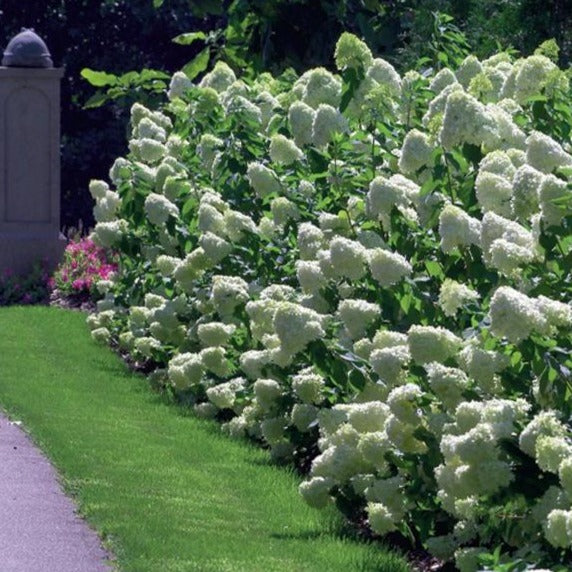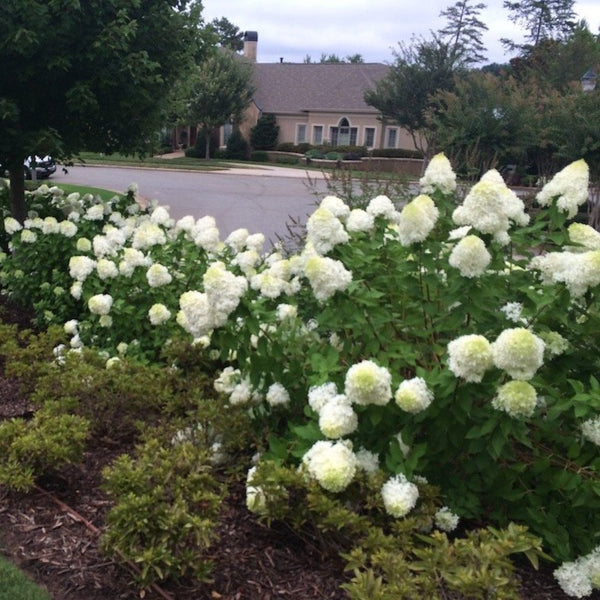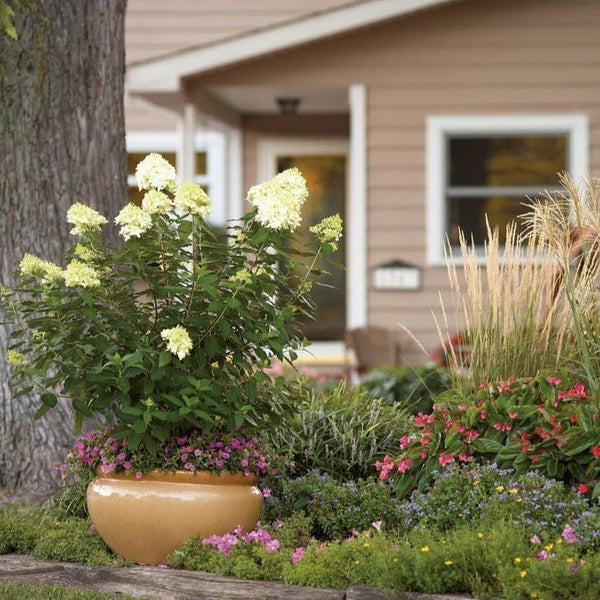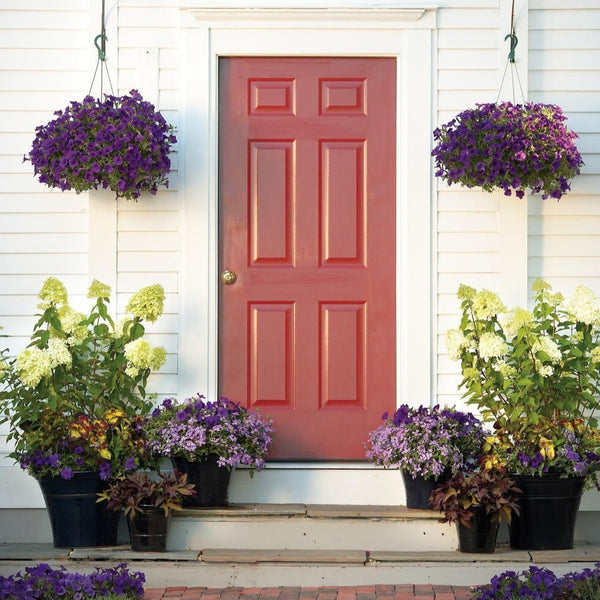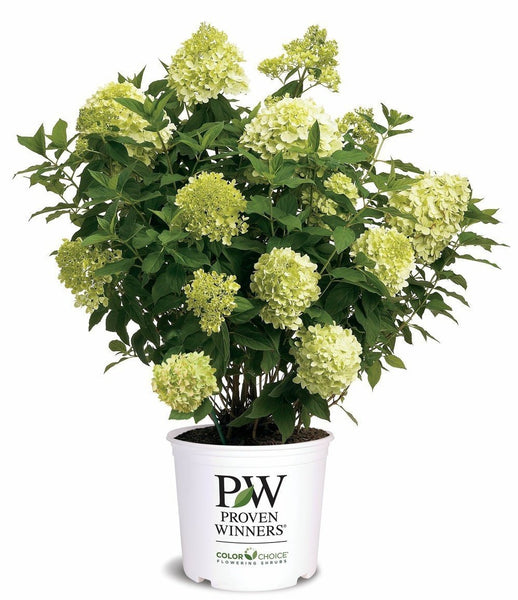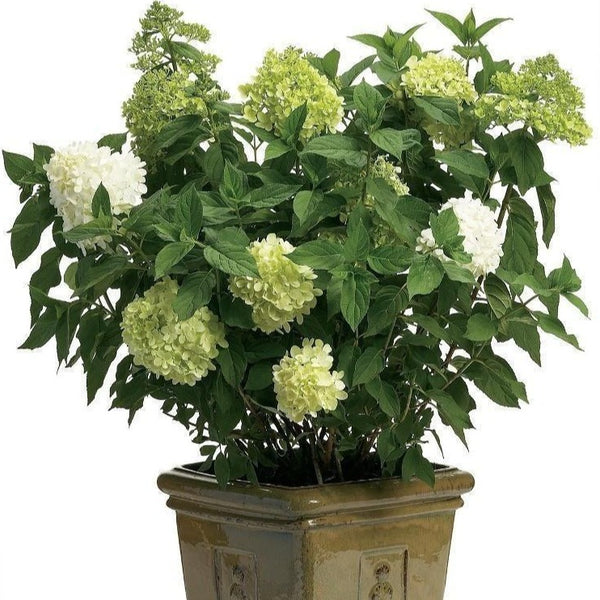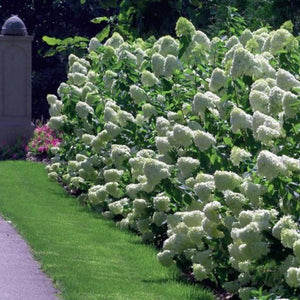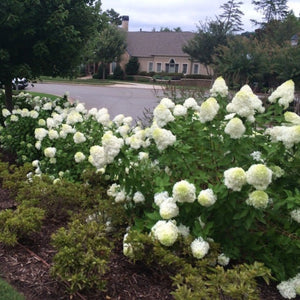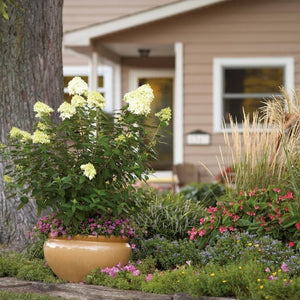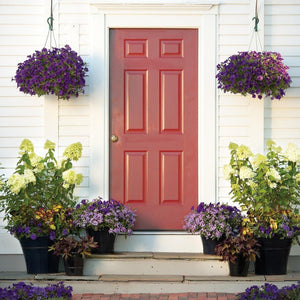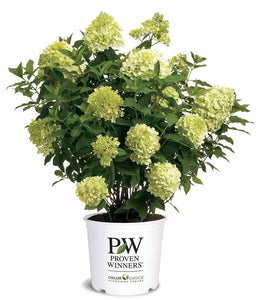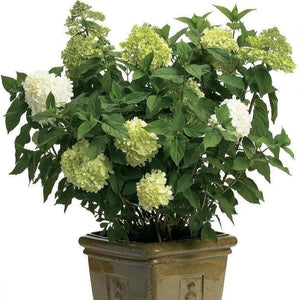Limelight Hydrangea
Product Details
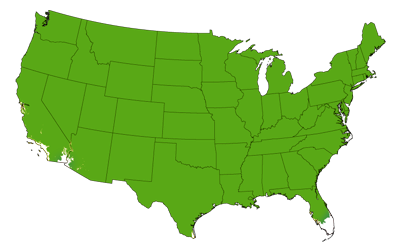 Growing Zones 3-9
Growing Zones 3-9
| Soil Type | Adaptable |
| Sunlight | Full, Partial |
| Drought Tolerance | Good |
| Mature Height | 6-10 Feet |
| Mature Width | 5-6 Feet |
| Fall Color | Red |
| Bloom Color | Pink, White |
| Brand | Proven Winners® |
| Shipping Restriction | AZ |
The Limelight Hydrangea is a hardy, reliable Hydrangea. Its creamy white blooms arrive in late summer and fade to green during fall. This easy-to-grow Hydrangea will tolerate almost any condition.
Bloom time is late summer through fall. The blooms of the Limelight are more upright and less round. They range from 6-12 inches in size. These blooms work great for cuttings and floral arrangements.
If you buy one Limelight Hydrangea, we guarantee you will be back for more!
When To Prune A Limelight Hydrangea
Prune in late winter or early spring before the new growth comes in.
Where Should I Plant This Hydrangea?
Plant this adaptable shrub in a spot that gets full sun to part shade exposure in grow zones 3-9.
How Far Apart Should I Plant This Shrub?
Space these hydrangeas 7-8 feet apart to accomodate a 4-6 spread at maturity.
When planting your Limelight Hydrangea be sure you have the right location and conditions for your new plants to thrive. Spring and Fall are ideal times to plant Hydrangeas. Avoid planting hydrangeas in summer when temperatures are mid 80s or higher.
Planting
The Limelight Hydrangea requires full sun to part shade and prefers moist, well-drained, fertile soil. In hot climates, hydrangeas will do best with some shade. This variety's color is not affected by soil pH.
Watering
Keep the soil moist, but not saturated, especially in summer and in the first year after planting. Throughout its life Hydrangeas will do best with a deep watering once weekly during hot temperatures. Mulching at about 3 inches deep is highly recommended for hydrangeas. Mulching will cut back on watering needs and protect your plant in extreme temperatures.
Fertilizing
Choose a slow release fertilizer for flowering plants. Fertilize once in spring after the last chance of frost and again in early summer for best results.
Maintenance
You don’t need to prune hydrangeas, but pruning after they are done blooming can help encourage a bushier growth and renew an older plant.
The best way to prevent disease and pests is by providing the appropriate care for your plants. Proper location choice, watering, and fertilization are the keys to your success. You can treat mites, scale, whiteflies, and aphids naturally with neem oil or insecticidal soap. For severe infections you can use pesticides like carbaryl, also known as Sevin. Fungal infection can be prevented by making sure the planting site has good drainage and by avoiding overhead watering. Fungal infections can be treated with a fungicide. Generally, treating fungus after infection isn't effective so if you have problems with other plants or in a prior year, treat preventatively in early spring.
Hydrangeas can be planted in numerous ways. This Hydrangea is very versatile.
Plant in groups or masses, in perennial and shrub borders, as a specimen, screen, or hedge. The Limelight is perfect in containers, mixed containers, and used as cut flowers. When planting in masses, space your limelight hydrangea about 4-5 feet apart to provide plenty of room for growth. Make sure you use a mulch to prevent weeds and hold in moisture.
Learn when to prune your flowering shrubs.
For additional options, be sure to browse our Hydrangea, Hydrangea trees and Endless Summer Hydrangea collection.


